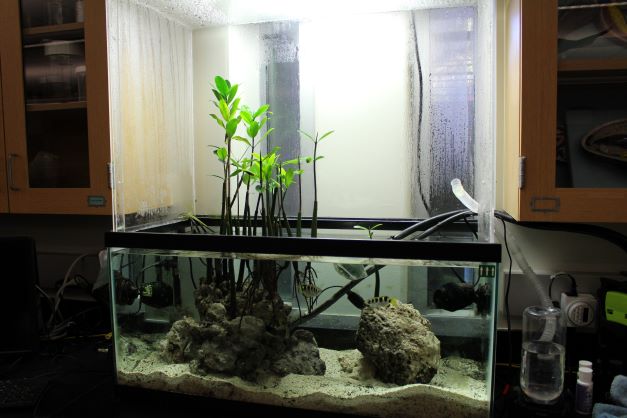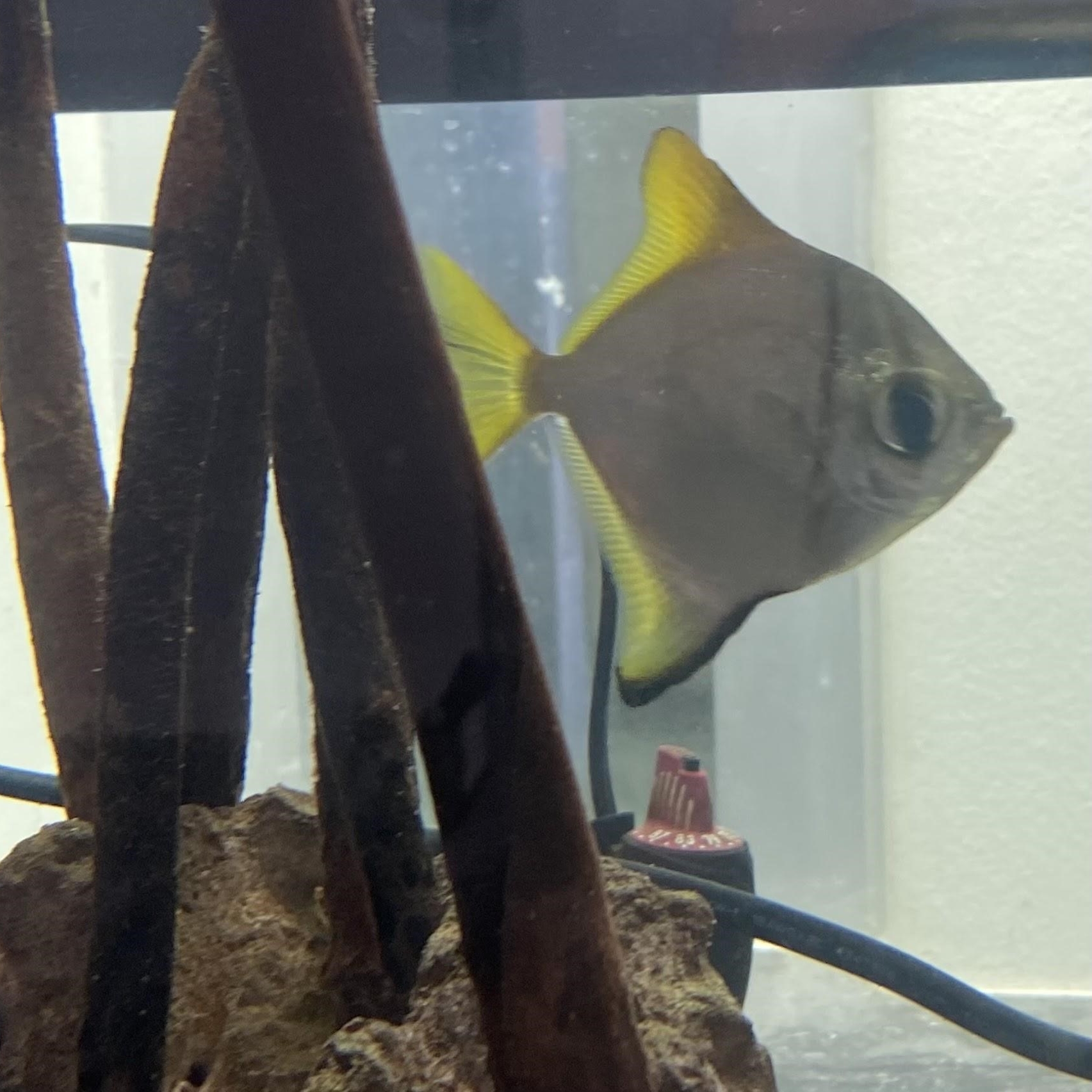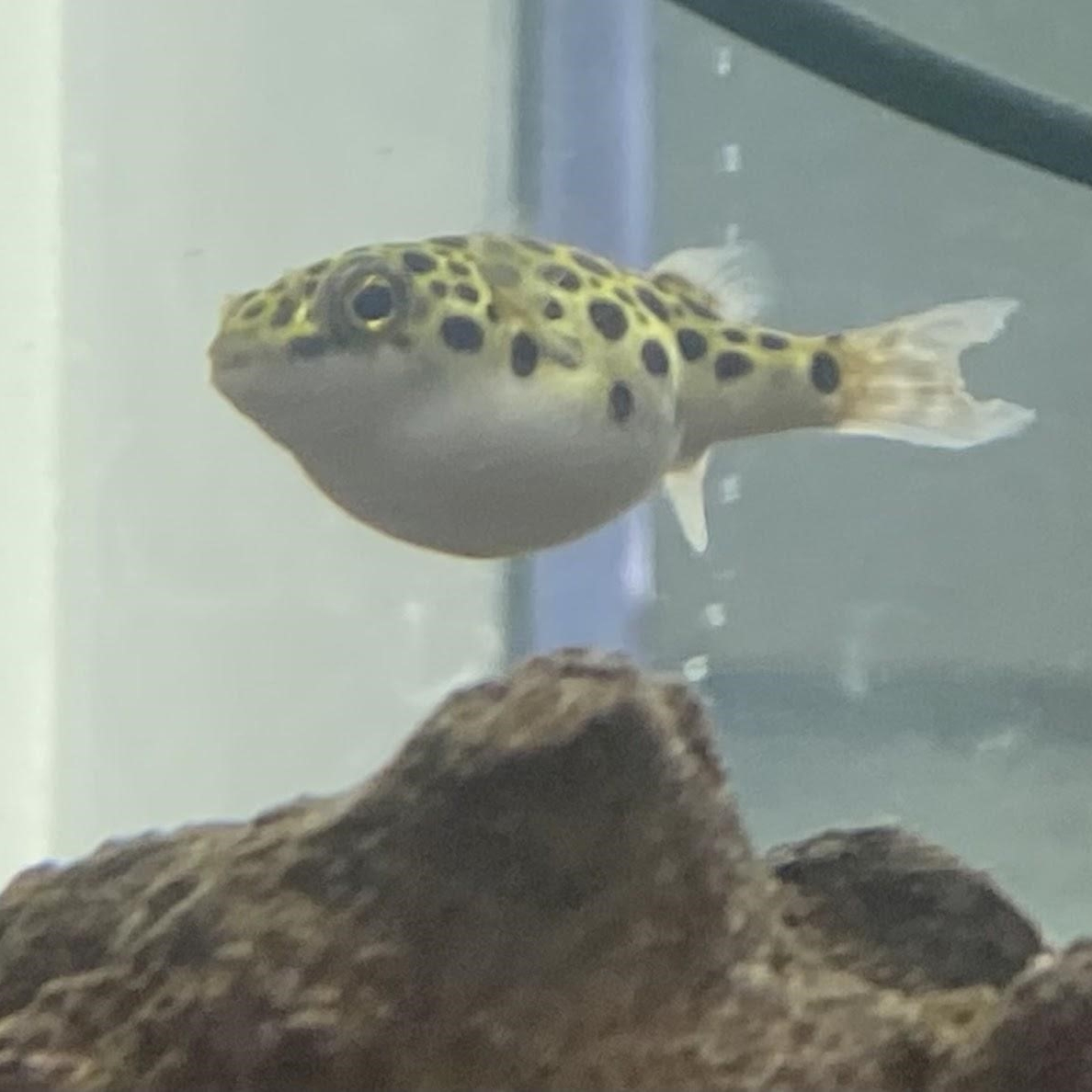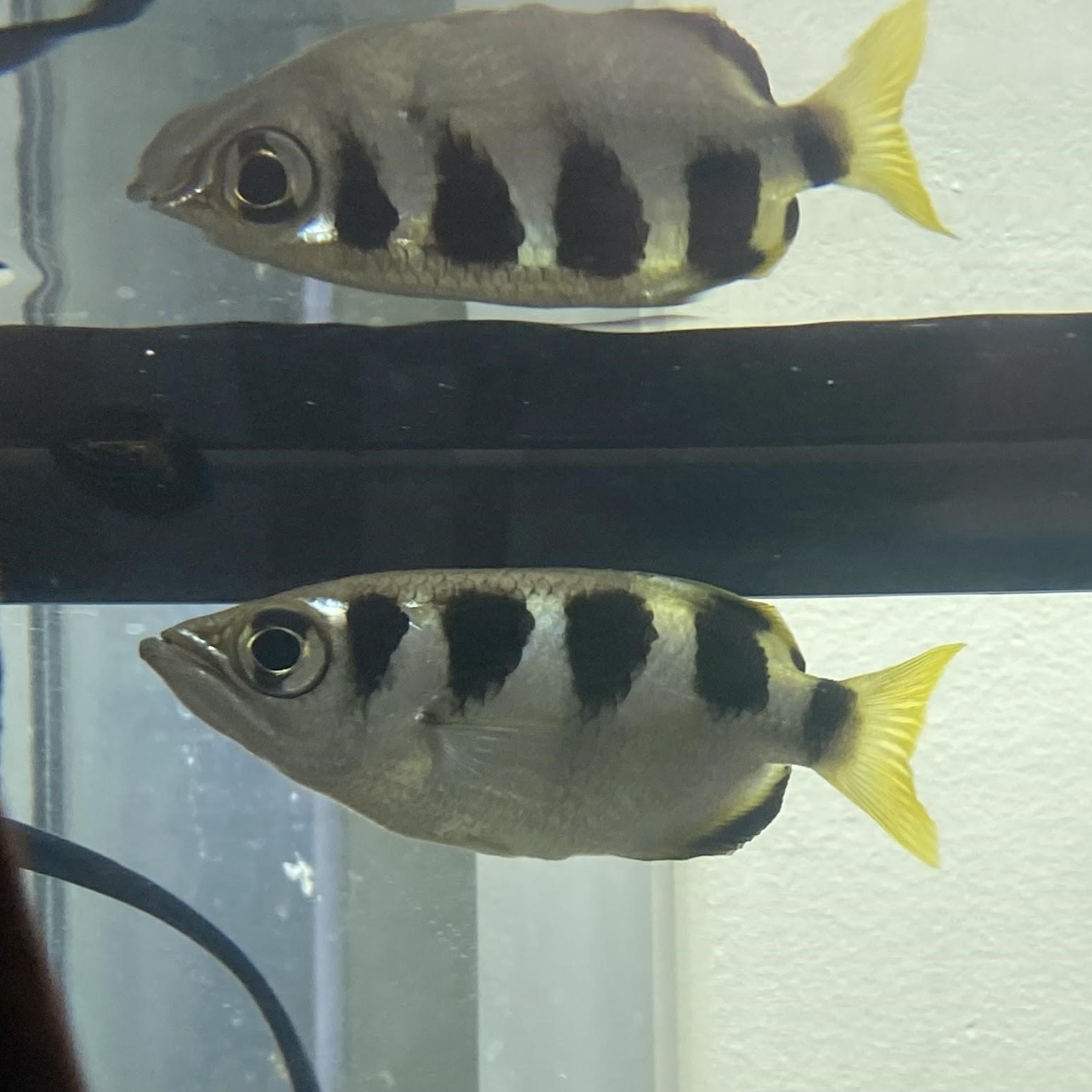Mangrove Estuary

Freshwater often makes its way to the ocean by way of river systems at coastal estuaries. These estuaries are characterized by brackish water and are areas of constant environmental change that provides diverse nursery habitats for many organisms.
System Characteristics
Details about the exhibit…
Brackish refers to low salinity (or salt concentration) saltwater such as the waters in estuarine ecosystems. The organisms in this exhibit are specialized to survive in such unique conditions and include the green spotted puffer fish, mono fish, archer fish, as well as red mangrove trees. Mangrove forests are found in tropical environments, so maintaining proper light, temperature, salinity, and humidity is crucial to all organisms within. To do so this exhibit uses halogen lighting and a fogger system in order to mimic natural light and humid conditions.
Organism Profiles
 MONO ANGELFISH (MONODACTYLUS ARGENTEUS)
MONO ANGELFISH (MONODACTYLUS ARGENTEUS)
The Mono Angelfish has many names such as Diamond Moonfish or Silver Batfish, referencing its signature triangular body. This angelfish species is recognizable with bright yellow fins and two black stripes, one running through the eye and one behind it. They begin life in estuarine environments, gradually moving to brackish and ocean salinities as they grow bigger. The process of increasing salinity is done over a 1-7 year period. Mono Angelfish are found in open and surface waters throughout Australia, Asia, and Africa, they need plenty of swimming space to dart around.
 GREEN SPOTTED PUFFER (DICHOTOMYCTERE NIGROVIRIDIS)
GREEN SPOTTED PUFFER (DICHOTOMYCTERE NIGROVIRIDIS)
This species of pufferfish can be found across Southeast Asia in varying conditions including brackish and salt water, usually located near-shore at the ends of a river. The green spots on their backside inspire its common name; a white belly combination gives their predators the illusion of camouflage. The green spotted puffer is an aggressive and socially active fish that should be kept with others of equal behavior to avoid a ‘puffing’. The puffing is induced when they are under threat and must appear bigger than the predator, forming a ball shape.
 BANDED ARCHERFISH (TOXOTES JACULATRIX)
BANDED ARCHERFISH (TOXOTES JACULATRIX)
The Banded Archerfish is one of seven different species typically found in brackish coastal mangrove estuaries. They have a unique means of hunting, spitting water at their prey causing them to fall into the water for consumption. A favorite in the wild is cricket, in captivity it is common to leave bloodworms on the walls hanging above waterline so the archerfish can practice their aim. The technique for overcoming the refraction of water is taught and the skill is more successful in older archerfish. They are very competitive when feeding and are sometimes spotted leaping from the water to capture prey before other archerfish.
 SILVER SAILFIN MOLLY (POECILIA LATIPINNA)
SILVER SAILFIN MOLLY (POECILIA LATIPINNA)
As the name infers, these fish have sail-like fins with varying spotted patterns and colors based on their common name. The silver sailfin molly is one of many species found in estuarine and brackish wetlands throughout North Carolina to Texas and the Yucatan Peninsula of Mexico. They prefer shallow waters where they have easy access to the surface to gulp in air with its upturned mouth.
